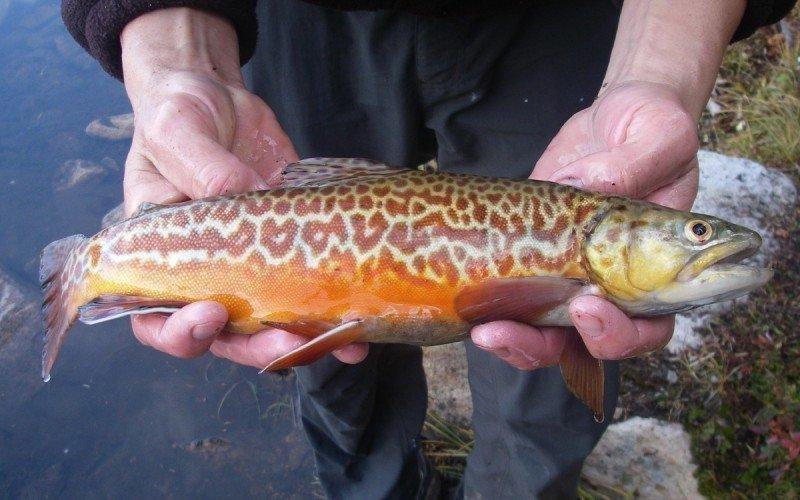When the leaves turn colors, cooler weather arrives and other anglers start putting their fishing poles away, many trout anglers break out in a big grin. They know they’ll have less competition for some of the best fishing of the year.
Why is trout fishing so good in the fall? Trout usually become more active then. And that creates opportunities for some excellent, fast fishing.
Ron Stewart, regional conservation outreach manager for the Division of Wildlife Resources, provides the following information to help you have a successful trout fishing experience this fall:
Trout like colder waters. As day and nighttime temperatures dip, the water temperature on the surface cools to the trout’s preferred range of about 50 to 55 degrees. The colder water temperatures allow the trout to move up from the depths and into the shallows, where they actively search for food. It also brings the fish within range of shore anglers. And, because the fish aren’t as deep in the water column, boat anglers don’t need special equipment, such as downriggers and weighted lines, to reach them.
Brown trout in particular become vulnerable to anglers because they spawn in the fall, usually in October. (Rainbow and cutthroat trout generally spawn in spring and early summer, although there is a strain in the Green River that spawns in the fall.)
As the brown trout come out of the deeper waters in lakes, reservoirs and larger rivers, they head to gravel beds in streams or creeks to breed. A quick look at a map should be enough to tell a savvy angler where to cast his or her line. Browns will be moving into the stream or canal that feeds the lake or reservoir. An especially good place to fish are pools beneath waterfalls and around obstructions that make it difficult from fish to move farther.
As brown trout move into streams, they often become aggressive. As long as you present them correctly, browns will take a wide range of flies, lures or baits. One technique is to flip a spinner or spoon into the upstream portion of a pool, and then reel it downstream as fast as possible. This is an effective technique—the fish don’t have time to figure out that the sudden flash of your lure isn’t a minnow or something else that’s good to eat, and they’ll take your offering.
Presenting a muddler minnow along the bottom is another good technique that more experienced anglers may want to try. Muddlers imitate sculpin, which are found in many mountain streams in Utah. And don’t forget salmon eggs or egg imitations. When a fish is spawning, other fish move in to feed. Eggs that aren’t hidden well become easy snacks. Try to match the size and color of the eggs that are in the water, and then place one or two eggs on a hook. Let the eggs drift into the pools, riffles and overhangs where the fish are likely hiding. If you can’t match the size of the eggs, go larger—even fish like a juicy meal.
As October ends, browns return to the lakes and reservoirs, but you can still catch them. You can often find these fish, along with other trout, cruising the shorelines, looking for minnows and the last of the insects and other terrestrial foods. As the water gets colder, try fishing areas that have structure, such as rockslides, underwater mounds or ridges. Also, slow your presentation down, or use baits. Because trout are cold blooded, they’re not as active in the fall as they would be in warmer water. Slower presentations, and using baits near structures, hold true for ice anglers too.
As the water temperatures get colder in the mountain streams, you can switch to fishing tailwater fisheries (below large dams) and springs. The water temperatures in these areas are usually warmer, so the fish in them may be more active.
Fall is a great time to fish. It really is too early to put your fishing pole away.


